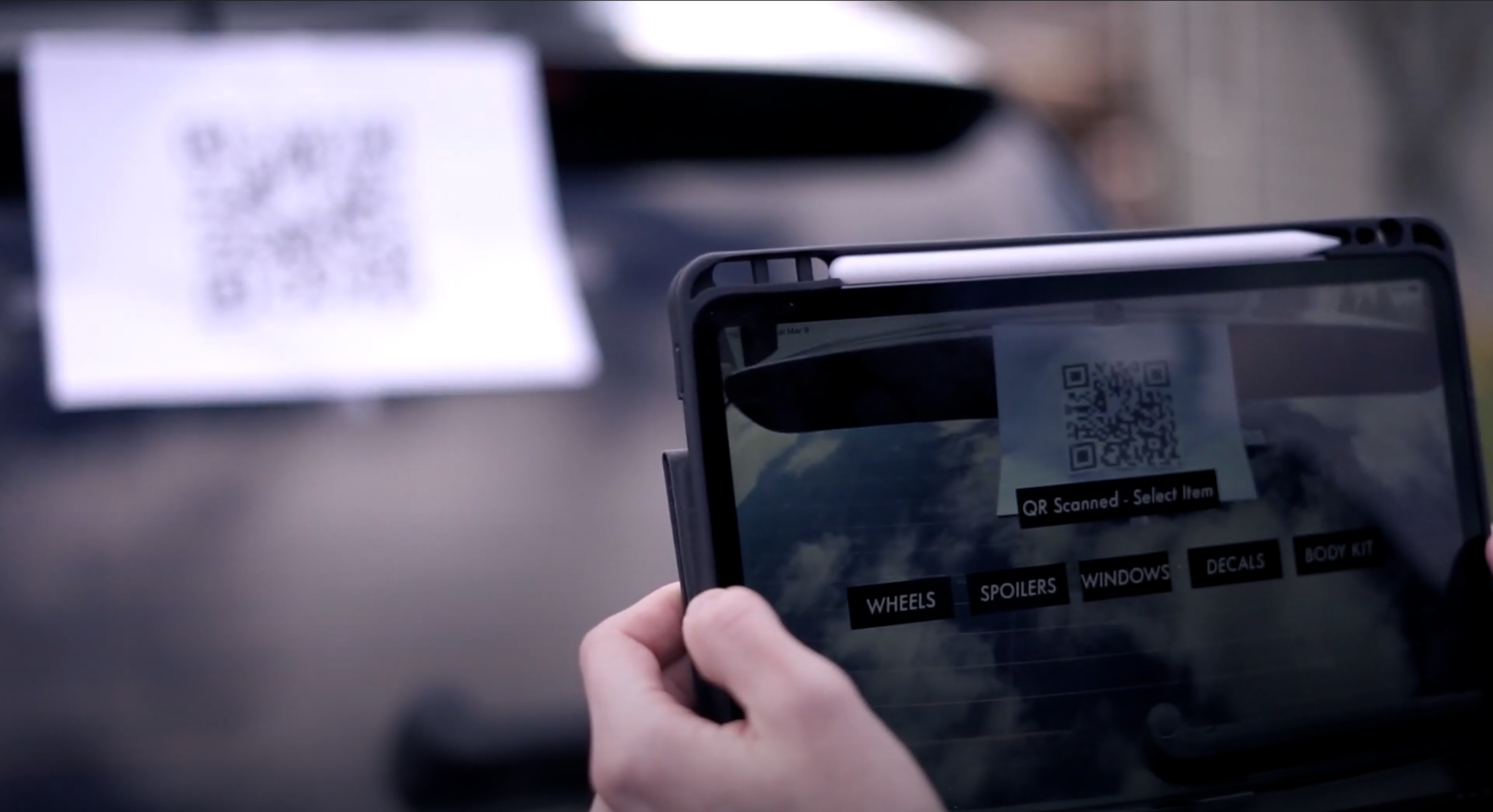
Team Credit
Kyle Olason: Project Lead, Graphic Design, Video Production
Chance Crum: Code, Graphic Design
Yuyu Dai: Code, Video Production
How We Got Here
When a group of motor heads is tasked with the challange of creating a useful application of Augmented Reality, they make a digital car parts catalog that paints itself straight on their cars. Rather than just imagine what your car could look like virtually on a table or driveway, we decided to simulate how real existing car parts could transform the way you present your vehicle.
Technicality
Based on some the great instruction we had recieved early in this project, we took the idea of using a QR code to stand is as the real-life place holder and anchor plate for Virtual items to connect to. Playing with different sizes, we ultimately found that at the time, we needed a QR code to be roughly six inches for the Ipad Pro to properly scan it.
Development
Once the QR code was scanned, it activated the C.A.R. Kit app’s menu system where you select from an assortment of parts such as wheels and aerodynamic upgardes. It was important to match different parts to a corresponding distance from the QR code so that the items would look convincing on the appropriate area of the car. I spent the majority of my development time working specifically on distancing objects. The other coder worked on rendering these amazing 3D assests and getting them to appear.
Presentation
Once it came time to show off our project, we were faced with the difficulty of not being able to take everyone out to a parking lot nor bringing a car into the classroom. Thanks to the help of my other group member for filming some scenes, and myself filming the rest and editing the full production, we created an commercial for our app as if you were to see it on the tv.



